Environmental Science > GIZMOS > Carbon Cycling GIZMOS. SCIENCE 101 Stephani DeBise. (All)
Carbon Cycling GIZMOS. SCIENCE 101 Stephani DeBise.
Document Content and Description Below
Student Exploration: Carbon Cycle Vocabulary: atmosphere, biomass, biosphere, carbon reservoir, carbon sink, fossil fuel, geosphere, greenhouse gas, hydrosphere, lithosphere, photosynthesis P rior Kno... wledge Questions (Do these BEFORE using the Gizmo.) In the process of photosynthesis, plants take in carbon dioxide (CO2) from the atmosphere and water (H2O) from the soil. Using the energy of sunlight, plants build molecules of glucose (C6H12O6) and oxygen (O2). Make sure all of your answers are in a different color. 1. How do plants on Earth affect the amount of carbon in Earth’s atmosphere? 2. Animals eat plants and produce carbon dioxide and water. How do animals affect the amount of carbon in Earth’s atmosphere? Gizmo Warm-up The Carbon Cycle Gizmo allows you to follow the many paths an atom of carbon can take through Earth’s systems. To begin, notice the black carbon atom in the Atmospheric CO2 area, highlighted in yellow. T he glowing blue areas represent possible locations the carbon atom could go next. 1. From Earth’s atmosphere, where can the carbon atom go next? 2. Click on Land plants and read the description (at the bottom of the simulation). How did the carbon atom get from the atmosphere to a plant? 3. Select Land animals. How did the carbon atom get from land plants into the animal (read the description )? 4. Select Atmospheric CO2. How did the carbon atom get from land animals back to the atmosphere? | Activity A: Carbon pathways | Get the Gizmo ready: | | ● Click Reset. | | | | | Introduction: Earth can be divided into four systems. The atmosphereis the air above Earth’s surface. The hydrosphereis composed of all of Earth’s water. The geosphere is the rocky, non-living part of Earth. The biosphere consists of all living things, including people. Some scientists use the term “anthroposphere” to describe everything made or modified by humans. Question: How does carbon move between the atmosphere, hydrosphere, biosphere, and geosphere? 1. Explore: Use the Gizmo to create a path for carbon (7 steps total) that begins and ends in the atmosphere. Fill in the steps in the path below. Then, summarize very briefly how the carbon atom got to that location. Carbon path How it got there Atmospheric CO2 Atmospheric CO2 comes from volcanoes, burning fossil fuels, and other sources. 2. Create: Click Reset. Use the Gizmo to create a path in which the carbon atom goes from the atmosphere to the hydrosphere, biosphere and geosphere (see the definitions at the beginning of Activity A). Describe each transition briefly. 3. Explore: Use the Gizmo to create three more (different) carbon paths, each starting and ending in the atmosphere. Label each location with A for atmosphere, B for biosphere, G for geosphere, or H for hydrosphere. Path 1: Path 2: Path 3: 4. Explain: Based on the Gizmo, explain how the following transitions might take place: A. Describe at least two ways that carbon can get from a land plant to the atmosphere. B. Describe at least two ways that carbon can get from the atmosphere to the hydrosphere. C. Describe two ways that carbon can get from the ocean to the lithosphere. (The lithosphere is the rigid layer of the Earth, including the crust and part of the mantle.) D. Explain at least two ways that carbon can get from seashells to the atmosphere. | Activity B: Human activities | Get the Gizmo ready: | | ● Click Reset. | | | | | Introduction: Fossil fuels, such as coal, oil, and natural gas, formed over millions of years from the remains of ancient plants and animals. The burning of fossil fuels, as well as other human activities, increases the amount of carbon dioxide in the atmosphere. Question: How does human activity affect the carbon cycle? 1. Describe: Using the Gizmo, determine how coal and petroleum (oil) are formed. Describe the steps required to form each fuel from atmospheric CO2. Coal: Petroleum: 2. Explore: Natural gas is a mixture of methane (CH4), ethane (C2H6), and other gases. How is the formation of natural gas related to the formation of coal and petroleum? 3. Describe: Fossil fuels are used in many ways. Using the Gizmo, describe the main use for each fuel. Coal:. Petroleum: Natural gas: In each case, what is the end product of burning the fossil fuel, and where does it go? 4. Explore: Another major contribution to atmospheric carbon dioxide is the cement industry. Using the Gizmo, find and list a carbon atom path from the atmosphere to the cement plant. (Hint: One of the ingredients in cement is limestone.) Path: How is carbon dioxide produced in a cement plant? 5. Analyze: Click Reset, then navigate to the Land animals. Select Atmospheric CH4. A. How do land animals create methane? B. Humans raise large numbers of cattle for food. How will these herds of cows affect Earth’s atmosphere? 6. Analyze: In many tropical rainforests, people clear land by cutting down trees and burning them. After a few years, the soil runs out of nutrients and cannot be farmed any longer. How does this practice of “slash and burn agriculture” affect Earth’s atmosphere? 7. Draw conclusions: In general, how do many human activities influence the carbon cycle? [Show More]
Last updated: 1 month ago
Preview 1 out of 7 pages

Reviews( 0 )
Document information
Connected school, study & course
About the document
Uploaded On
Dec 03, 2020
Number of pages
7
Written in
Additional information
This document has been written for:
Uploaded
Dec 03, 2020
Downloads
2
Views
192


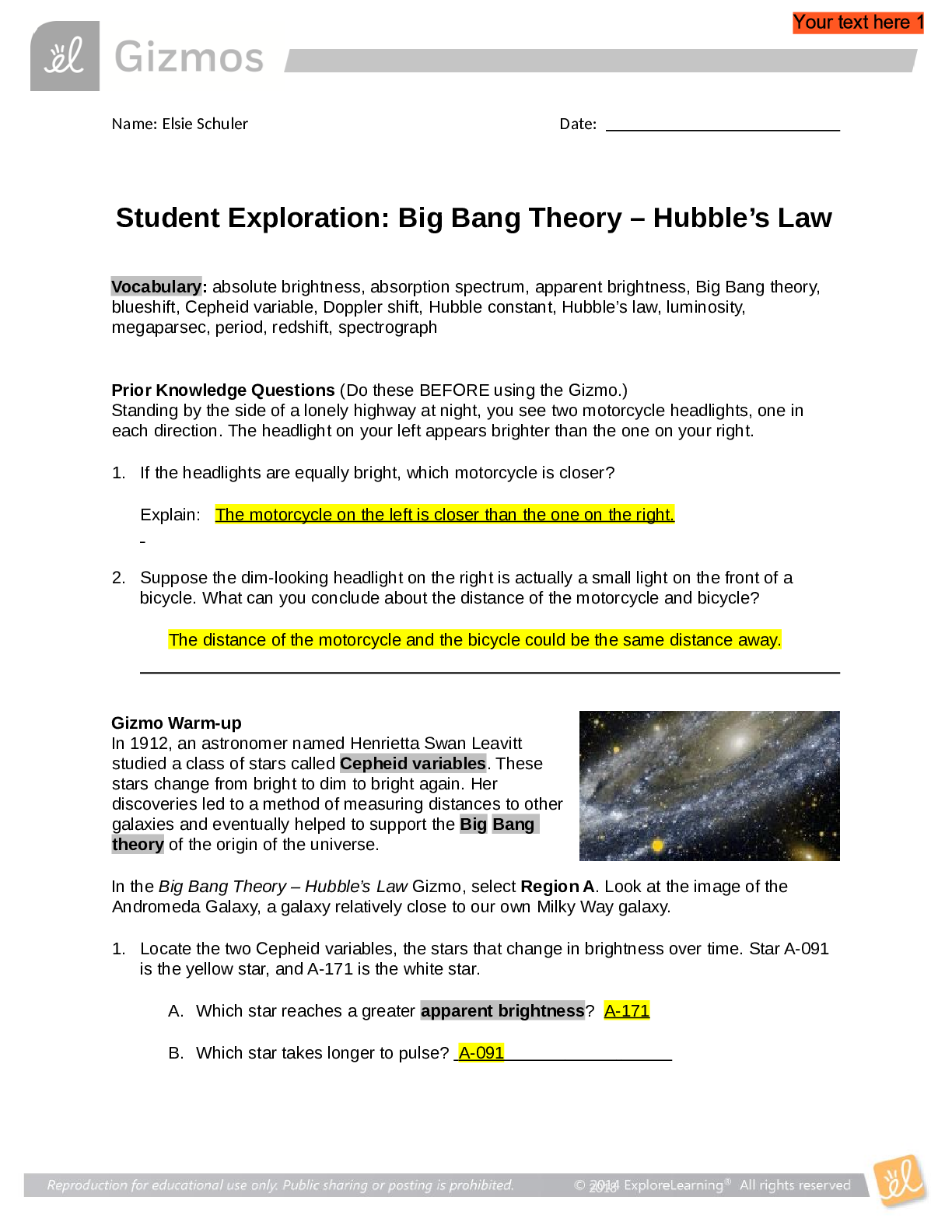


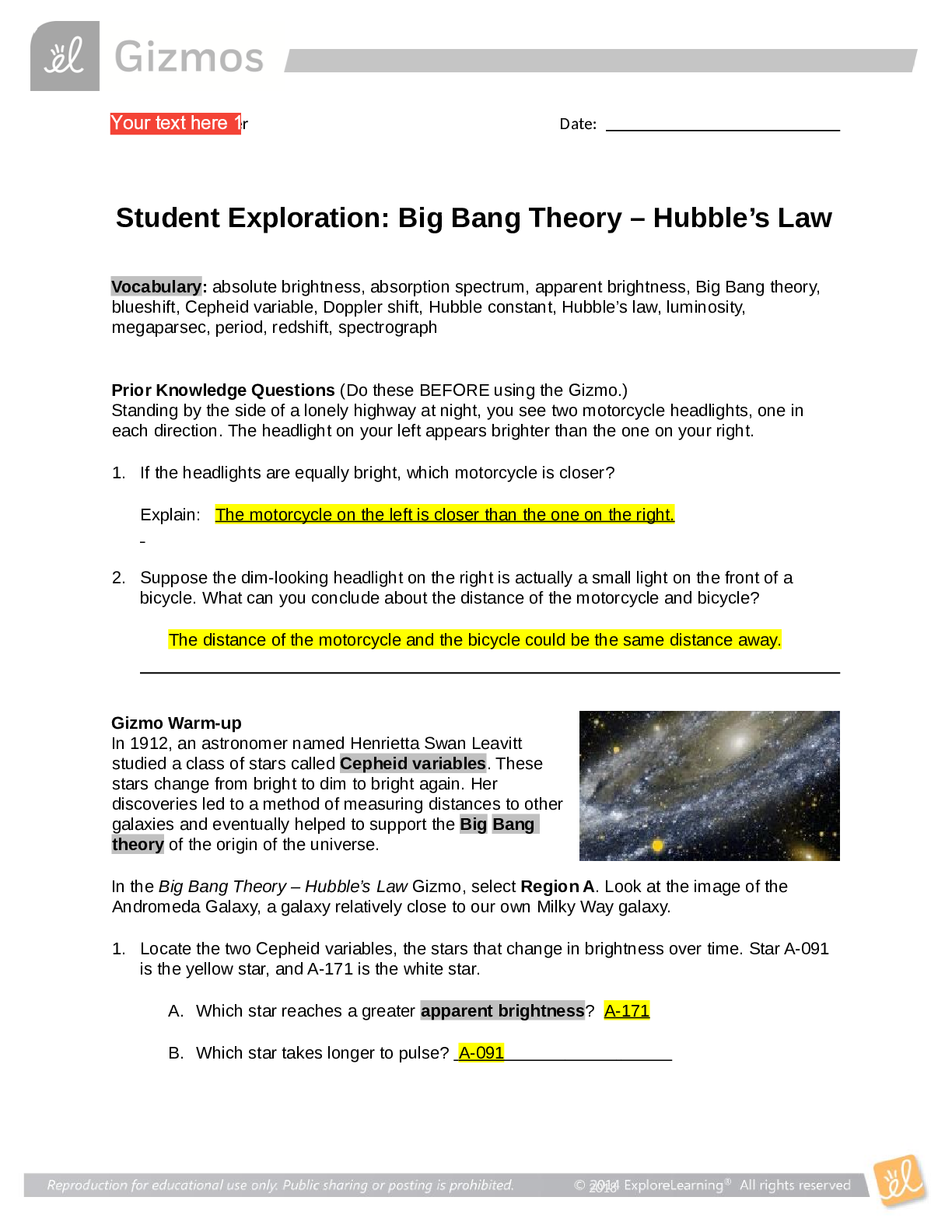
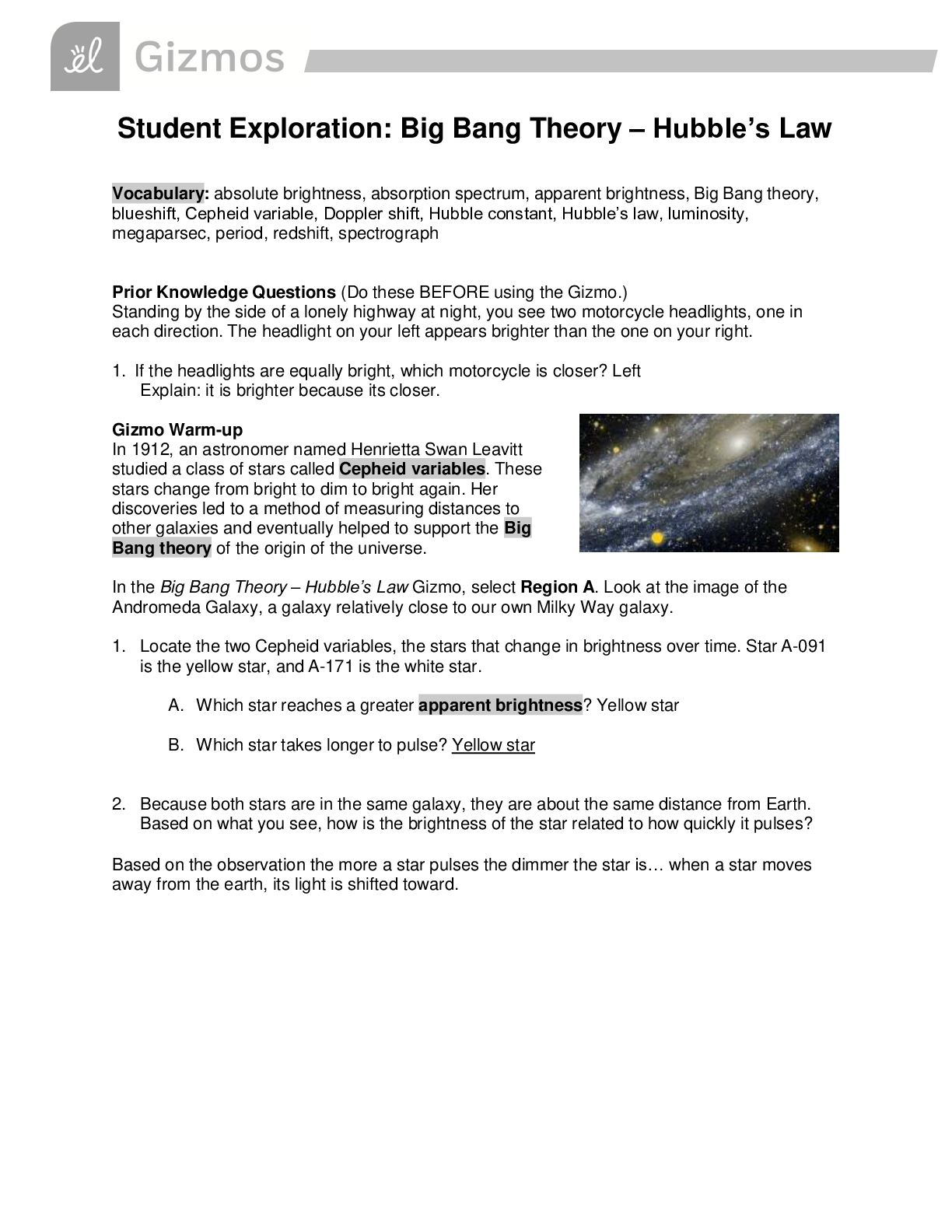

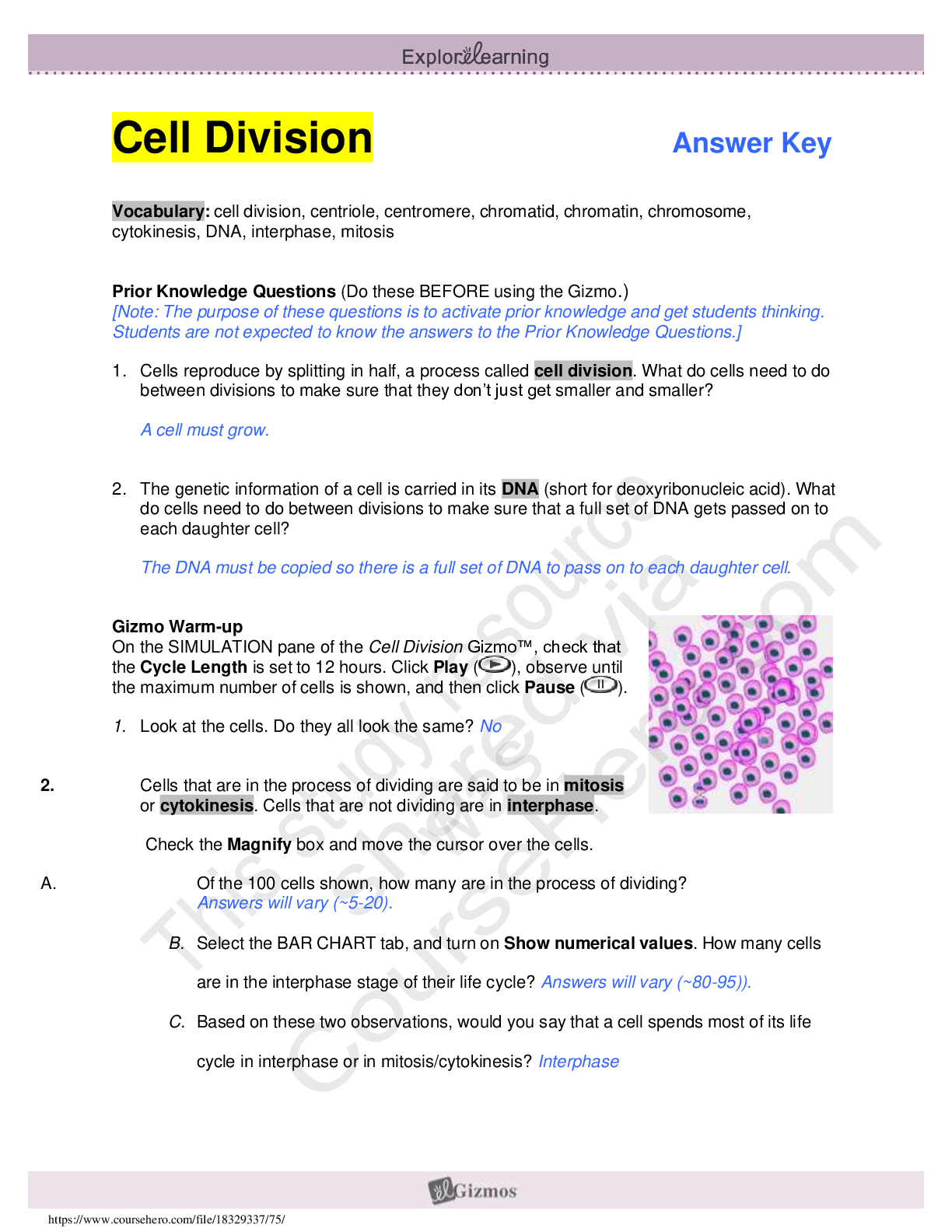
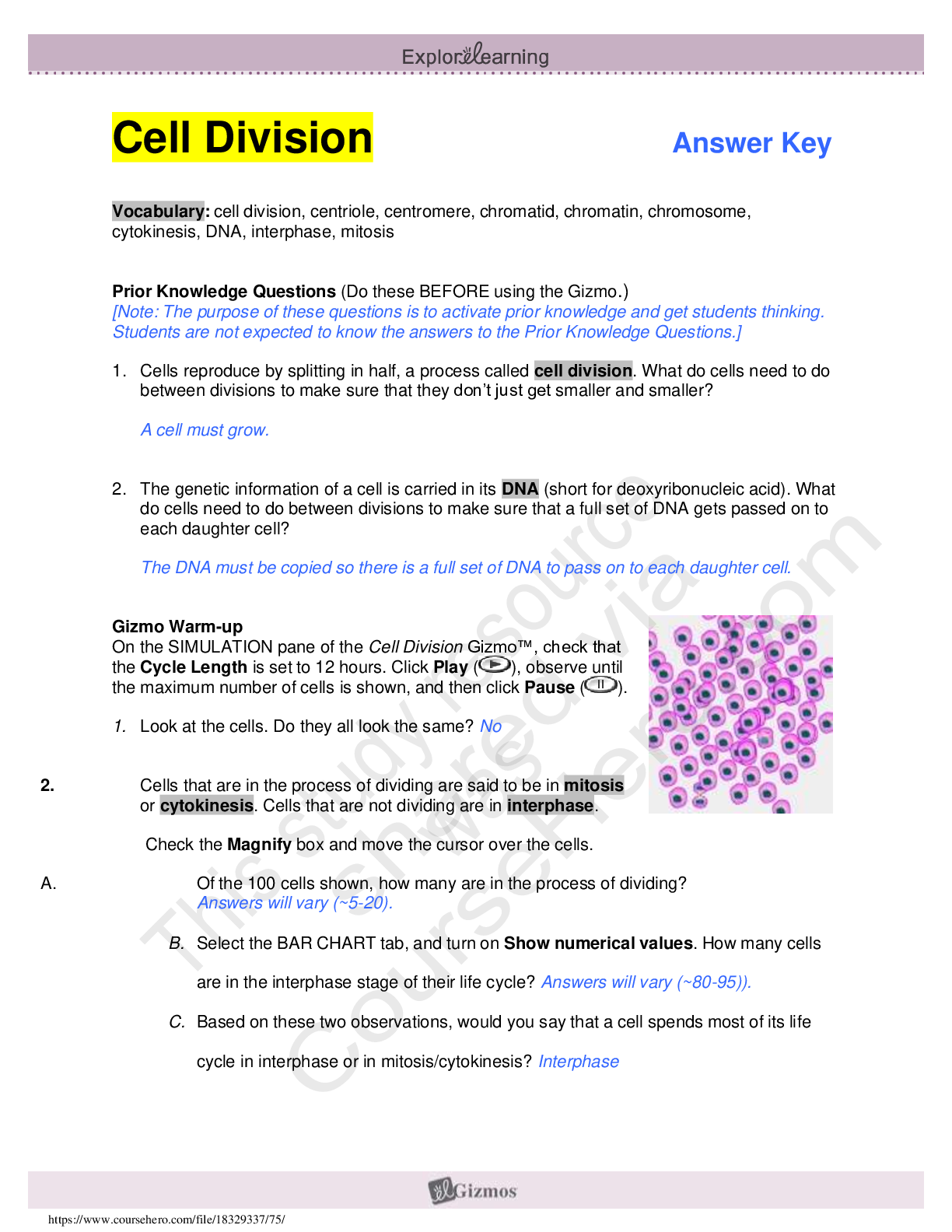
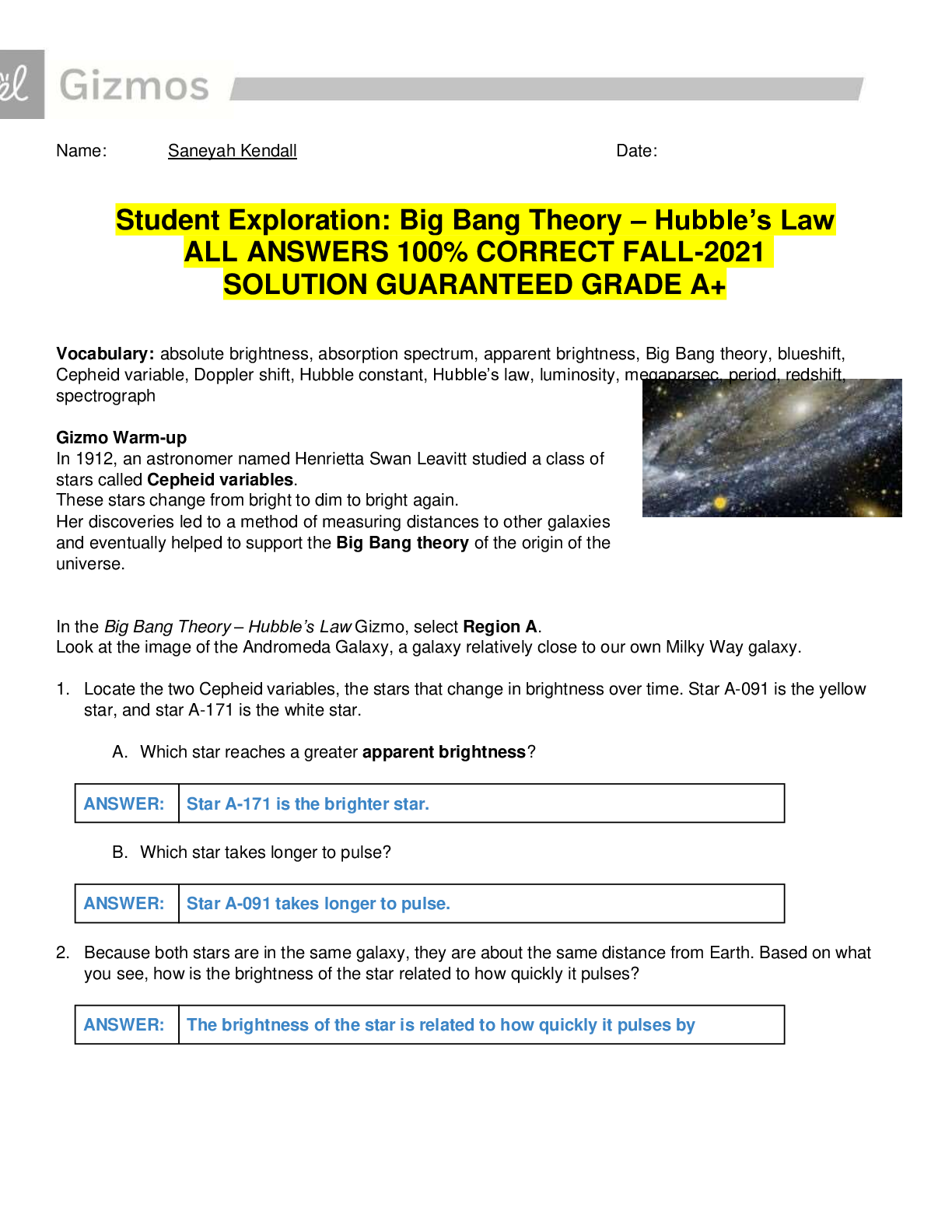

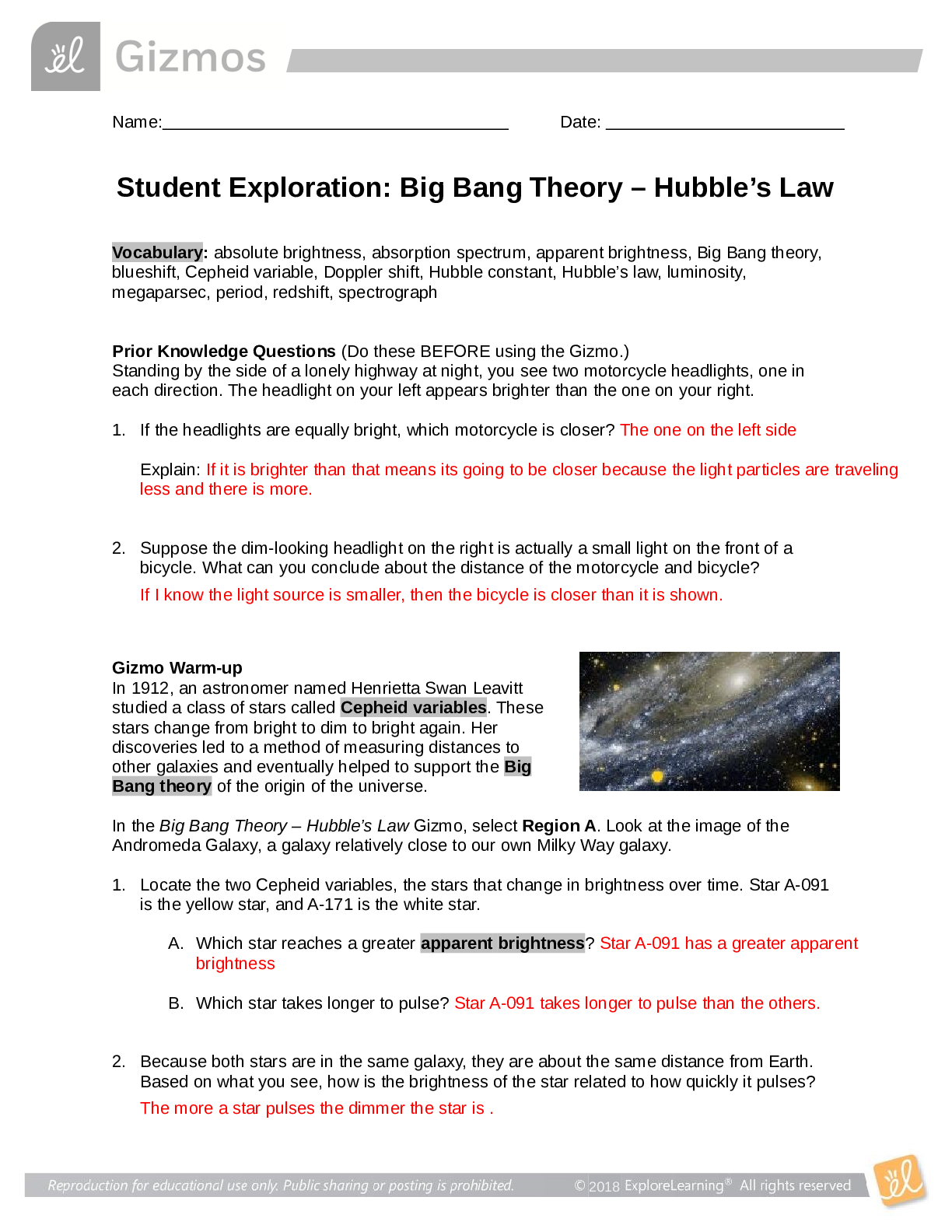
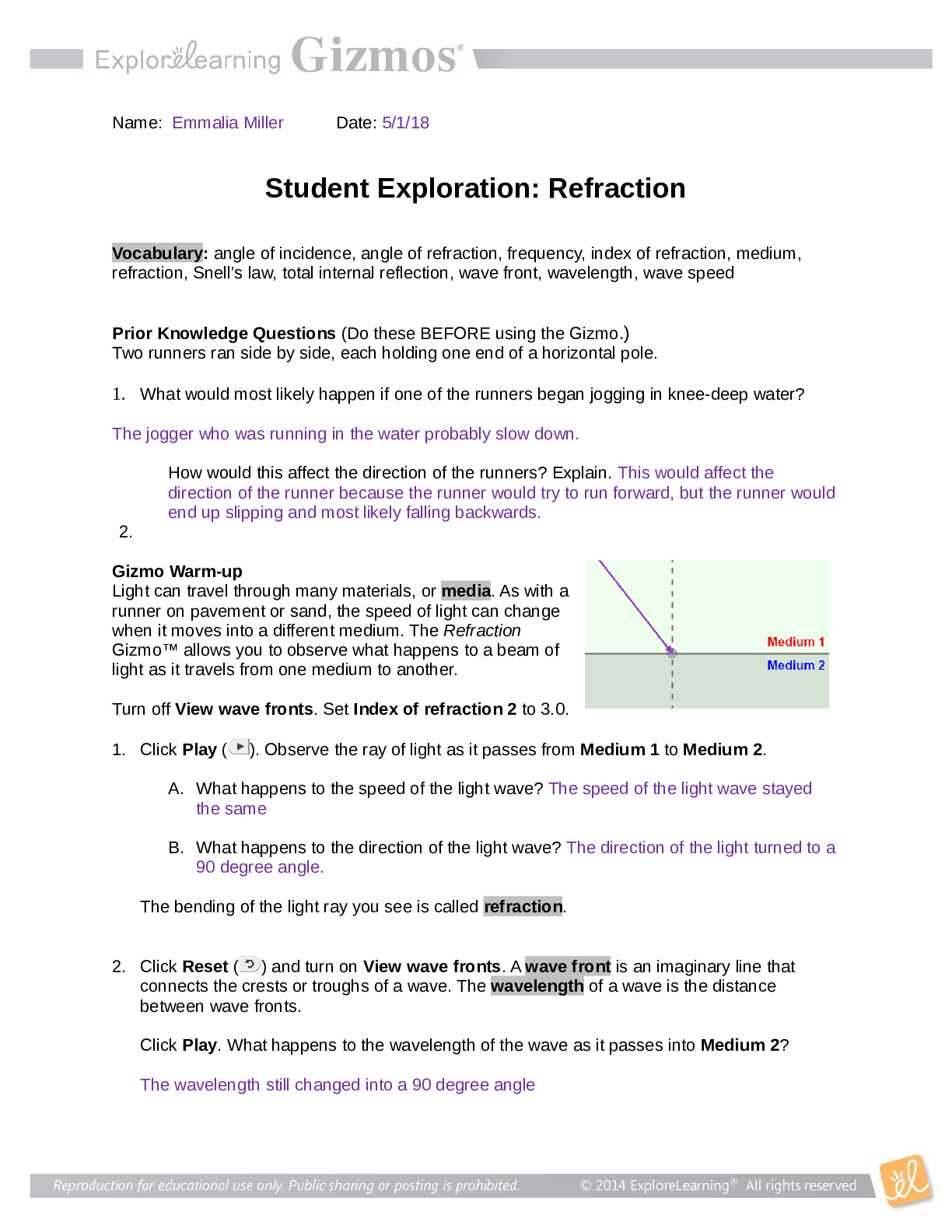

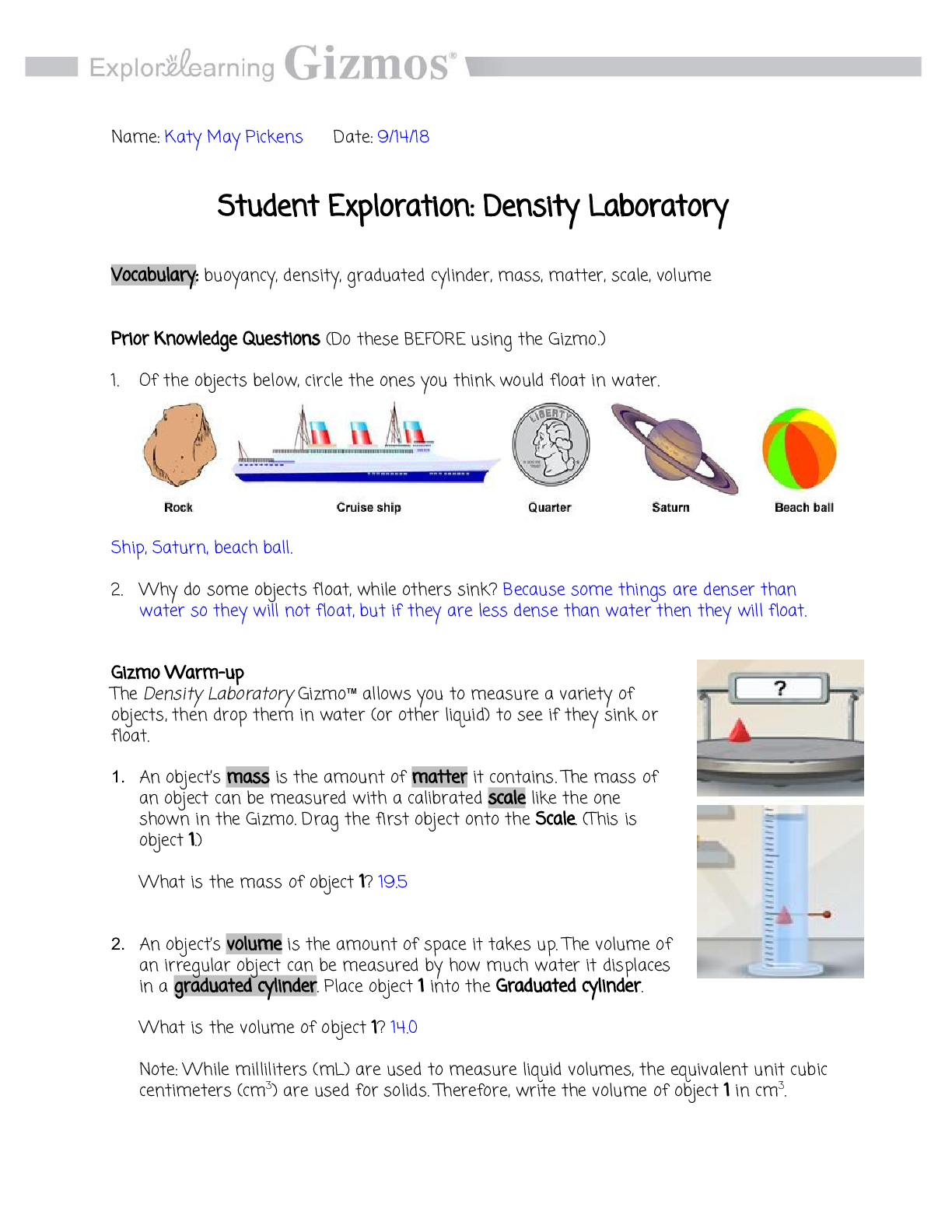
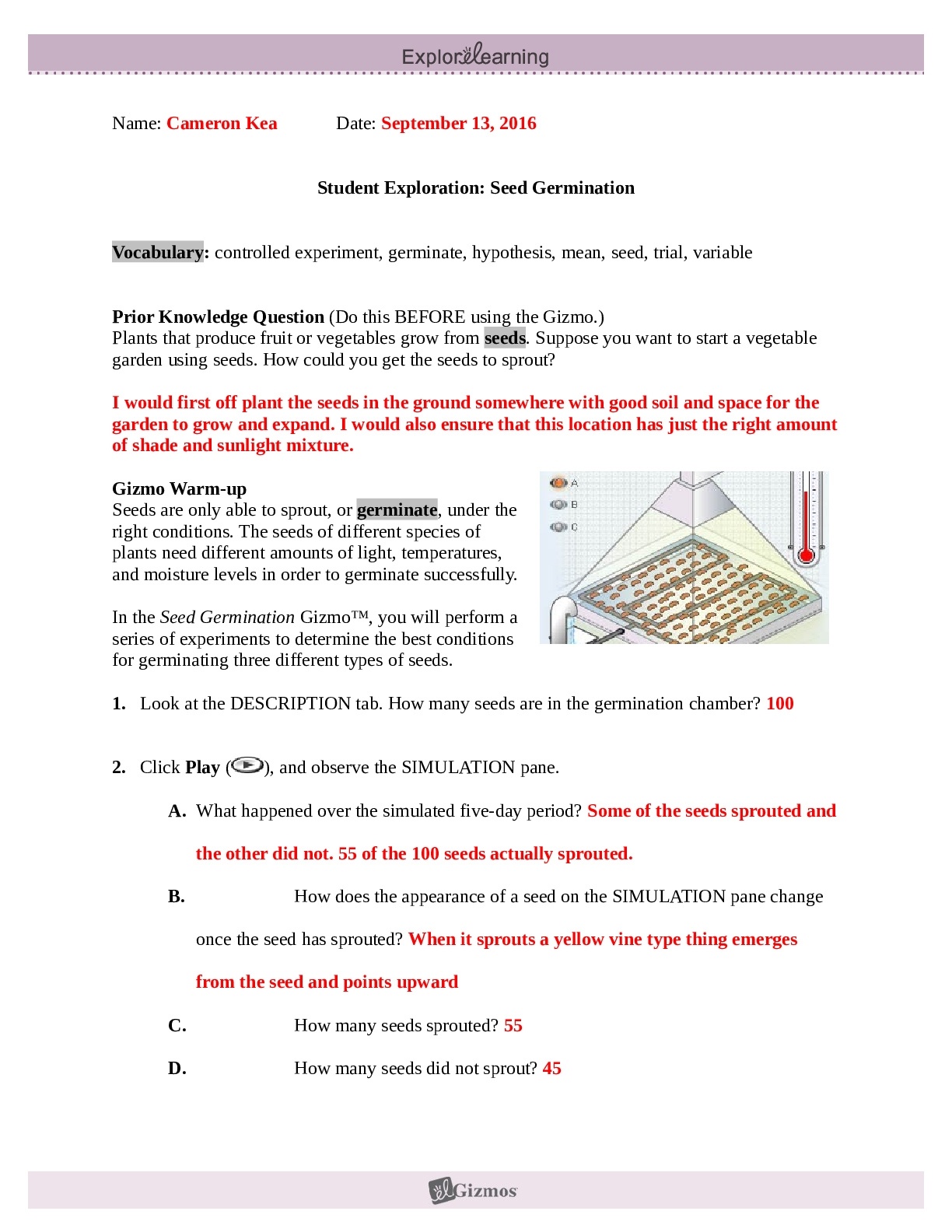

.png)

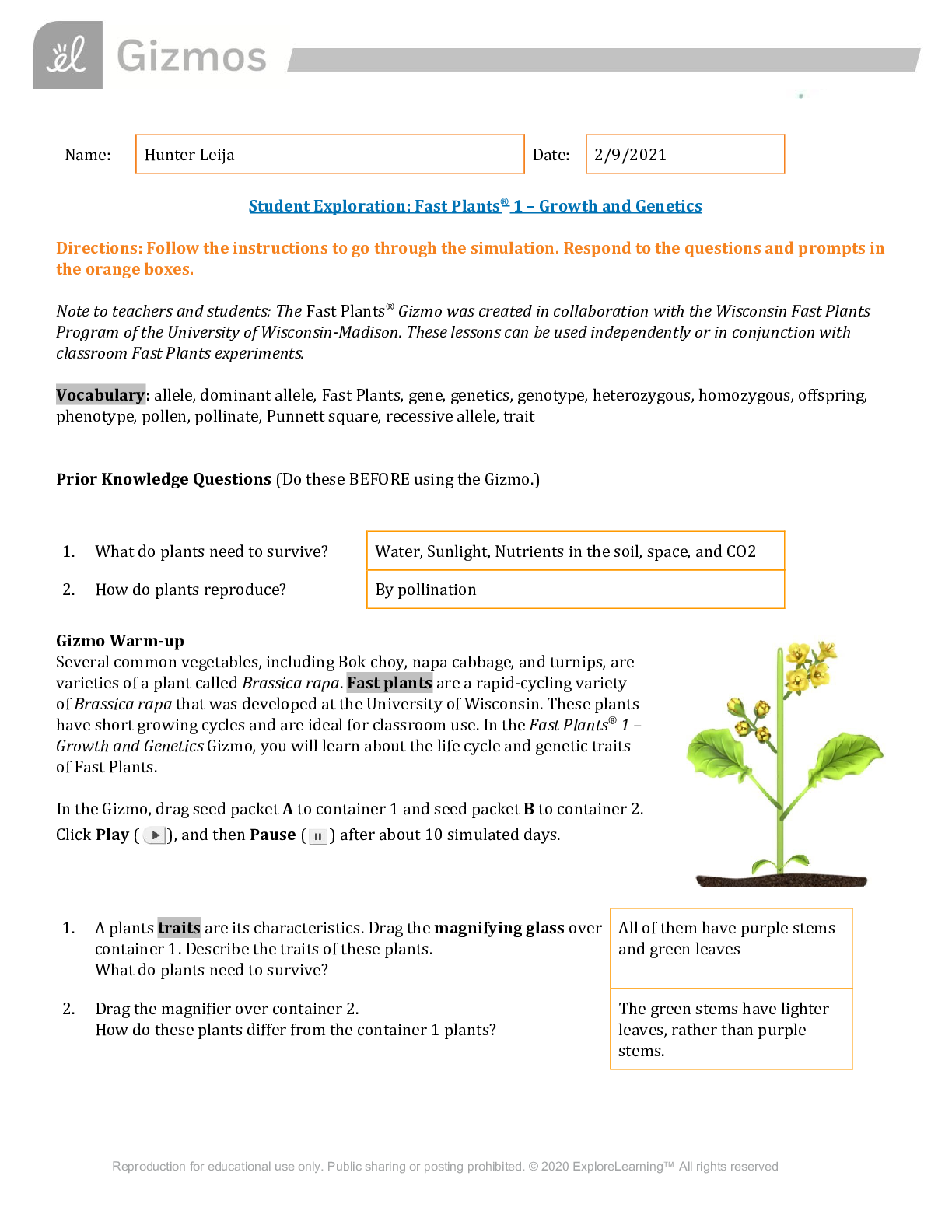
.png)

